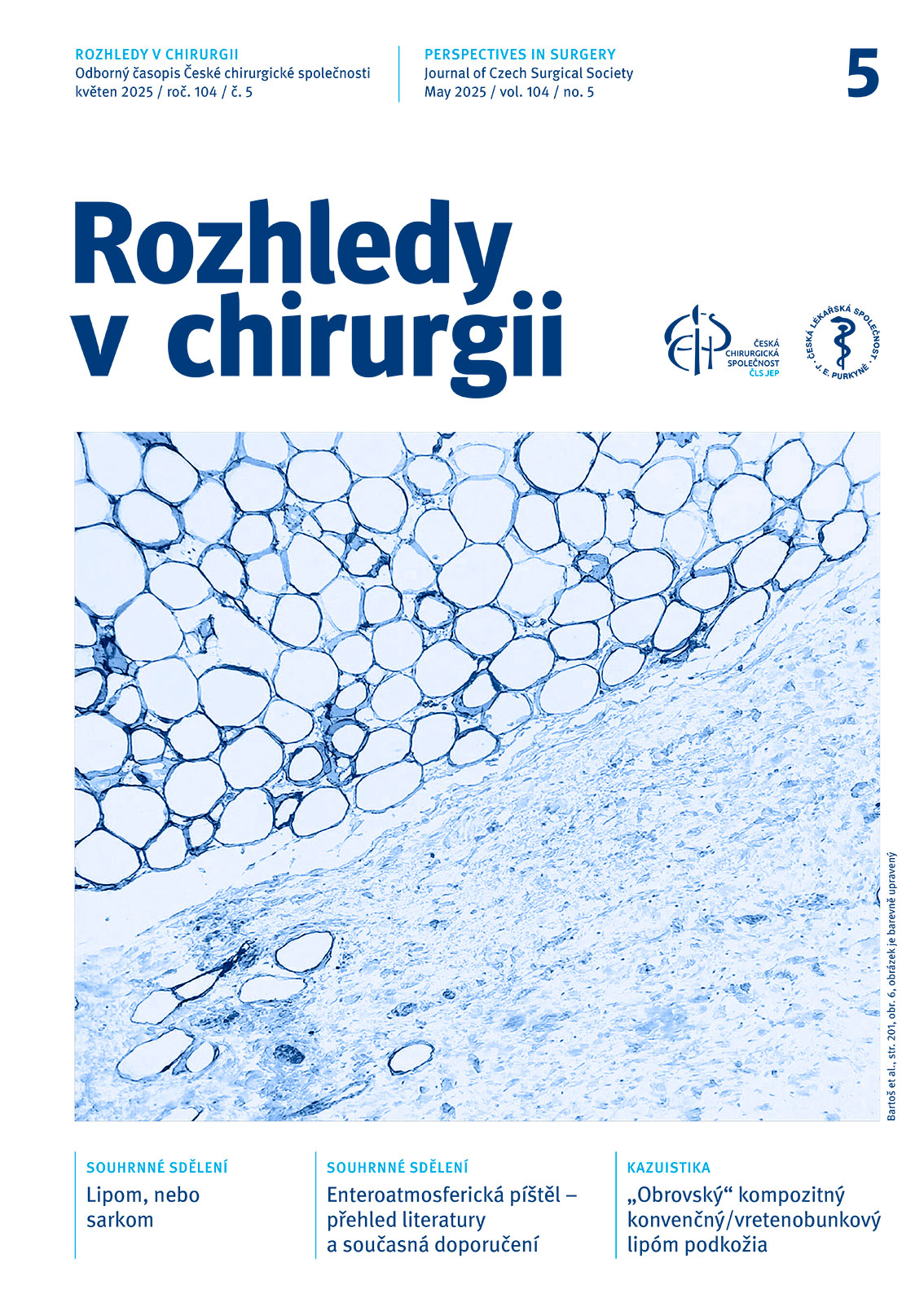Abstract
Enteroatmospheric fistula (EAF) is one of the most severe and life-threatening surgical complications, significantly increasing the cost of patient treatment. It is classified as a postoperative complication, collectively referred to as abdominal catastrophes. EAF is a specific type of intestinal fistula that occurs when the intestinal lumen opens into an unhealed defect in the abdominal wall, leading to continuous wound contamination that complicates healing. Treatment of this complication is challenging, prolonged, and requires a multidisciplinary approach in three distinct phases. In the first phase, the goal is aggressive therapy of abdominal sepsis and management of its source. After stabilizing the patient, the second, chronic phase focuses on care for the defect and reversing the nutritional status from catabolism to anabolism. Following the maturation of adhesions in the abdominal cavity, healing of the wound around the EAF, and adequate nutritional preparation, the patient undergoes the reconstructive phase, which involves restoring the continuity of the digestive tract and reconstructing the abdominal wall. Throughout all phases, the patient is at risk for numerous secondary complications related to malnutrition and prolonged hospitalization. Therefore, preventing the development of EAF is of paramount importance. The aim of this paper is to summarize current recommendations for the treatment of EAF and discuss some of the modern approaches to managing this condition.
doi: 10.48095/ccrvch2025191


